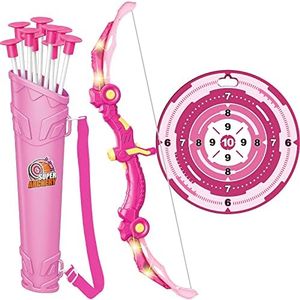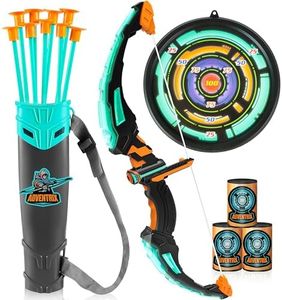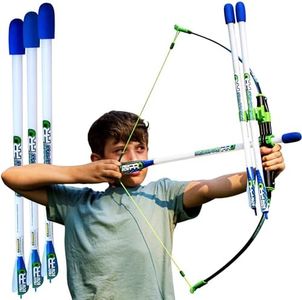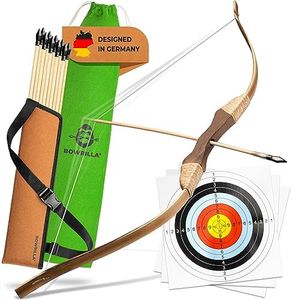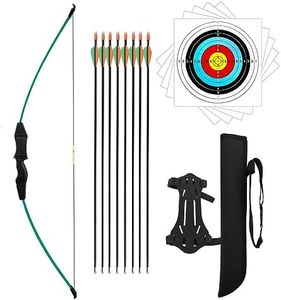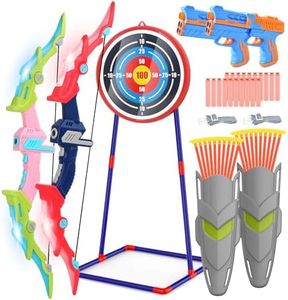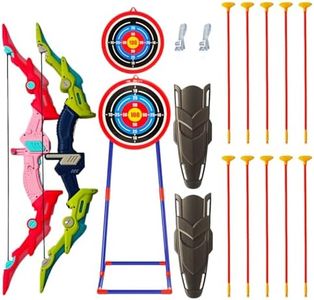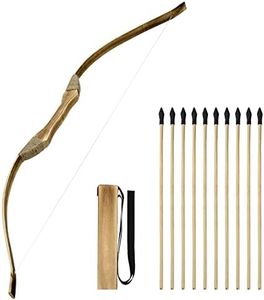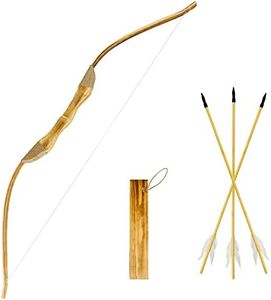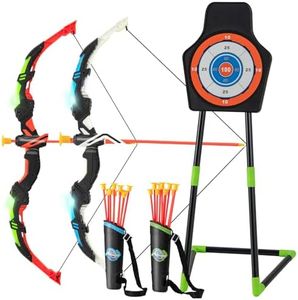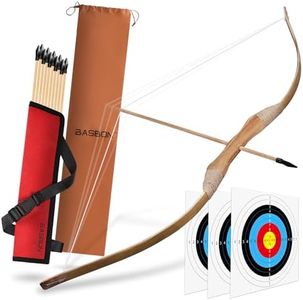We Use CookiesWe use cookies to enhance the security, performance,
functionality and for analytical and promotional activities. By continuing to browse this site you
are agreeing to our privacy policy
10 Best Youth Bow And Arrow
From leading brands and best sellers available on the web.By clicking on a link to a third party's website, log data is shared with that third party.
Buying Guide for the Best Youth Bow And Arrow
Choosing the right youth bow and arrow set is important because it can make a big difference in your child's enjoyment, safety, and progress as they learn archery. The best approach is to consider your child's age, strength, and interests, and to look for equipment that matches their abilities. Selecting the right specs helps ensure that the bow isn’t too heavy or difficult to use, making practice both fun and safe. Understanding the main features will help you pick a set that helps the young archer develop proper technique and stay excited about the sport.Draw WeightDraw weight refers to the amount of force required to pull the bowstring back. It is important because if it’s too high, it can be hard for a child to use the bow properly, and if it’s too low, the arrows may not fly well or far. Typically, draw weights for youth bows range from about 10 to 25 pounds. For very young children or beginners, lower weights (10-15 lbs) are best, as they allow for easier handling and help build confidence. Slightly older or stronger kids can use higher draw weights as they gain experience. Consider your child’s age, size, and strength—start lower and move up as they grow or show more skill.
Draw LengthDraw length is the distance from the bow grip to the string when the bow is fully drawn. It affects comfort, safety, and shooting accuracy. Youth bows usually offer shorter draw lengths to suit smaller arms. Bows with adjustable draw length are ideal because they can grow with your child. Measure your child’s arm span (fingertip to fingertip) and divide by 2.5 for a good estimate of their draw length. Make sure the bow can be adjusted close to this value—being too long or too short can lead to poor form and frustration.
Bow Size and WeightThe physical size and weight of the bow matters to ensure it’s comfortable and manageable for a young archer. Youth bows are lighter and shorter for easy handling. For very young kids, a smaller, lighter bow lets them practice longer without tiring. As kids grow, they can handle bows that are a bit bigger and heavier. Try to match the bow’s size and weight to your child’s height and strength—if possible, let them hold the bow before buying to check if they feel in control.
Type of BowThere are a few types of bows available for youths, with the most common being recurve bows and compound bows. Recurve bows are simpler, lighter, and easier to understand, making them great for absolute beginners. Compound bows are more advanced and have pulleys that make them easier to hold at full draw, which can help with accuracy. For kids just starting out, recurve bows are usually a better fit; older or more dedicated young archers might benefit from a compound bow as they progress.
Arrow CompatibilityIt’s important that the arrows used are suitable for the bow. This means they should be the correct length and stiffness (called spine), and made of safe materials like fiberglass or carbon for beginners. Arrows that are too short, long, or stiff can be unsafe or hard to shoot. Most youth bows are designed for commonly available training arrows, which makes it simple to find matching arrows. When picking arrows, make sure they match the recommended length for your bow and child’s draw length, and avoid overly heavy or sharp-tipped arrows for young beginners.
Safety FeaturesSafety is crucial for young archers. Look for bows with rounded edges, flexible limbs, and easy-to-use grips. Many youth sets include finger guards or arm guards to prevent injury. Consider also how easy it is to draw and let down the string without pinching fingers. Picking a bow with visible safety features and teaching proper handling are both essential for a positive introduction to archery.
